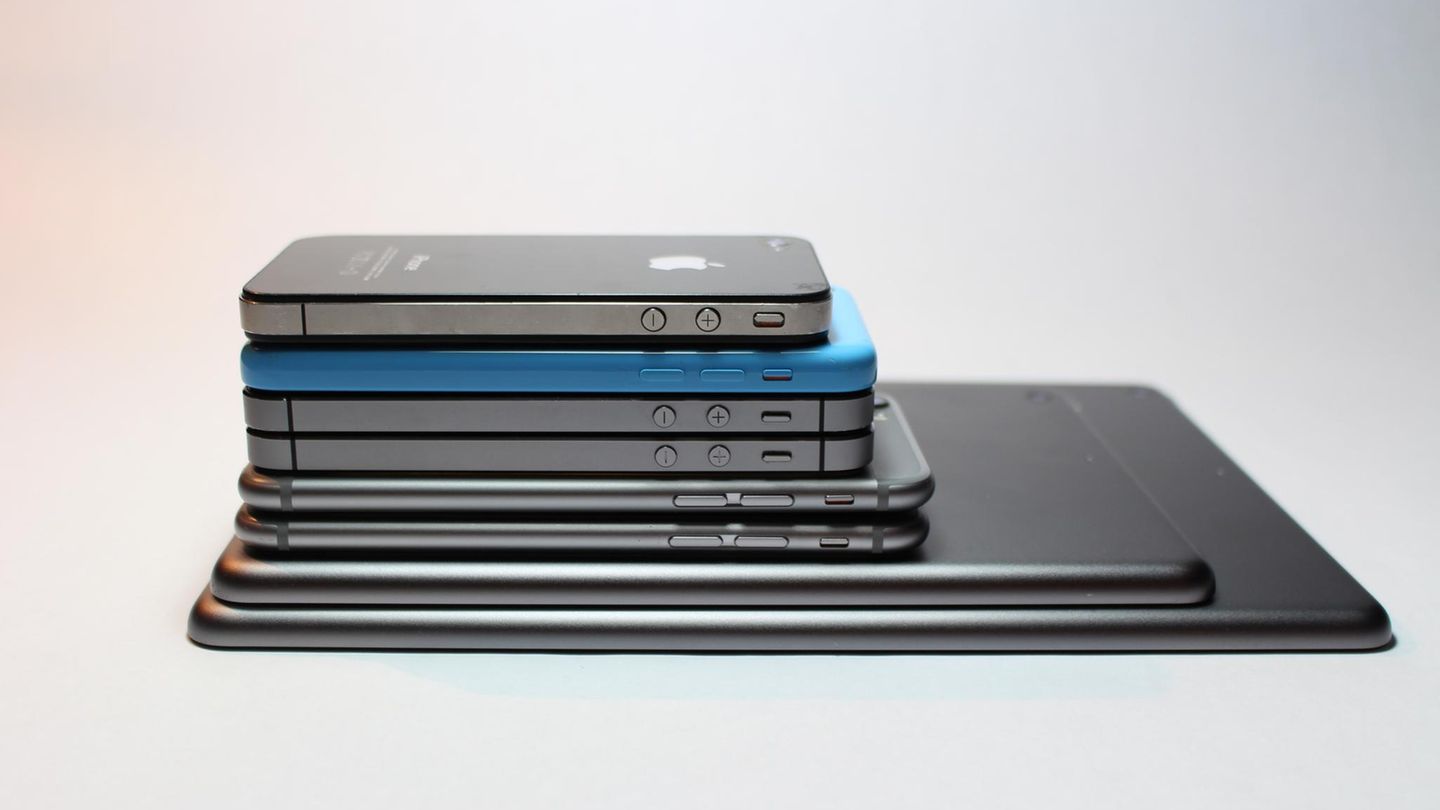In 2007 Apple launched its first iPhone – 20 other models have followed to date. It’s not that easy to name the smartphones in the correct order. Or?
There is a good reason why iPhone users are often referred to as “Apple disciples”: Regardless of whether they bought their first smartphone from the American manufacturer in 2007 or only a few years later – anyone who has switched to Apple will stays with Apple. In other words, the iPhone is repeatedly exchanged for the latest model and used until a new version comes out on the market. But why is it that so many smartphone users have remained loyal to a brand over the years? On the part of the fans of the Cupertino group, one can often hear that Apple combines the perfect symbiosis of design, innovation and technology in its iPhone models. Yesterday and today. The following list shows how iPhones have evolved over the years.
iPhone 13, iPhone 13 Pro, iPhone 13 mini und iPhone 13 Pro Max
Im September 2021 became the new one and could only be (pre) ordered a few days later from 899 euros. That are available from 769 euros. For the However, you already pay 1149 euros and for that even costs a proud 1249 euros.
iPhone 12, iPhone 12 Pro, iPhone 12 mini und iPhone 12 Pro Max
Im October 2020 The next batch of new iPhones flooded the cell phone market: that (6.1 inches) and that (6.1 inches). That followed shortly afterwards (5.4 inches) and that (6.7 in.) In November 2020.
iPhone SE (2. Generation)
end April 2020 Apple presented a classic: the second generation of the iPhone SE. The design stayed the same, but the interior was modernized: so the new had old iPhone SE a familiar small screen (4.7 inches), but significantly more power than its predecessor.
iPhone 11, iPhone 11 Pro and iPhone 11 Pro Max
Recently the time had come: Apple put in the middle September 2019 its new iPhone models. There are a total of three different models, which differ as follows:
That has a 6.1 inch screen and is the successor to the iPhone XR.
That has a 5.8 inch screen and is the successor to the iPhone XS.
That has a 6.5 inch screen and is the successor to the iPhone XS Max.
iPhone XS, iPhone XS Max und iPhone XR
2018 Three iPhone models came onto the market: with an A12 processor and an eSIM, but equipped without a fingerprint sensor and home button (5.8 inches), that (6.5 inches) and that (6.1 inch) an all screen design. And that has its price.
iPhone 8, iPhone 8 Plus, and iPhone X
In September 2017 three new iPhone models were presented again: the , the – and the with a 5.8-inch display and Face ID, Apple’s most expensive smartphone to date. In addition to the A11 Bionic SoC processor, the iPhone X caused a sensation, especially with its display, which took up the entire front.
iPhone 7 and iPhone 7 Plus
One year ago (2016) there was another team: that (including 3D touch) and that (incl. dual camera). Visually just as large as the 6 series, but inside the models boast an A10 processor. In addition, they are resistant to dust and water.
iPhone SE
end of March 2016 came that on the market. With its four inches, the cell phone is again significantly smaller than its predecessor, but it is also much cheaper to buy. Despite having the same camera, the model with its A9 processor and LTE with up to 150 Mbit / s was quite convincing.
iPhone 6s and iPhone 6s Plus
In September 2015 Apple followed up with another duo: that and its bigger brother, that . Both iPhone models are equipped with a new processor, twice as much RAM memory (two gigabytes), a 12 megapixel camera and can record “Live Photos” (ie moving images) and videos with 4K resolution.
iPhone 6 and iPhone 6 Plus
One year before (2014) Apple caused surprised faces: the iPhone 6 with its 4.7-inch display was already larger than its predecessor, the However, with its 5.5 inches it was beyond the scope. Both have an A8 processor and a large storage capacity (up to 128 GB).
iPhone 5c
On the same day, Apple suddenly brought more color into play with the iPhone 5c: more precisely, you could choose between a white, pink, yellow, blue and green plastic housing. Everything else remained the same – except for the longer talk time and standby time.
iPhone 5s
end of September 2013 appeared that : Equipped for the first time with iOS 7, this model can transmit in all LTE networks. Available in silver, gray and, for the first time, gold, the smartphone offers three different storage sizes (16, 32 and 64 GB) and an even better camera.
iPhone 5
In September 2012 the iPhone 5 was presented to the public: With a four-inch display made of glass, an aluminum back, the now one gigabyte of RAM and an A6 processor, the model is even bigger and faster than its siblings.
iPhone 4s
Unchanged in design compared to the iPhone 4, the iPhone 4s surprised in October 2011 with an even faster processor (A5), an even better camera (eight megapixels), even larger memory (up to 64 gigabytes) – and new voice control: Siri, the personal assistant.
iPhone 4
One year before (2010) the iPhone 4 came on the market, but this time in a new design. Equipped with a new processor (Apple A4), the smartphone was able to convince with its new five-megapixel camera, video telephony (Facetime) and a better screen resolution (960 × 640 pixels).
iPhone 3GS
In June 2009 The iPhone 3GS appeared: Just as big as its predecessor, this model combined new features – such as a different processor, a better camera (instead of two a 3.1 megapixel resolution), longer battery life and a more stable Internet connection.
iPhone 3G
The iPhone 3G revolutionized in July 2008 finally the mobile phone market: In contrast to its predecessor, mobile surfing via UMTS was finally possible with this model – it was sold almost twelve million times worldwide in the same year.
iPhone
The first iPhone appeared in early November 2007, has a 3.5 inch screen and a resolution of 480 by 320 pixels. Almost 1.5 million iPhones were sold in the year of publication.
David William is a talented author who has made a name for himself in the world of writing. He is a professional author who writes on a wide range of topics, from general interest to opinion news. David is currently working as a writer at 24 hours worlds where he brings his unique perspective and in-depth research to his articles, making them both informative and engaging.




